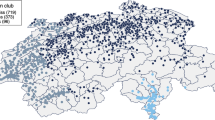Abstract
EDINBURGH.
THE Edinburgh meeting has not been remarkable for a large turn-out of members. Probably the greatest number of members are present on the Friday, when practically all have come and none have left. At this high-water mark the number of members, associates, and holders of transferable ladies tickets, was 2009, and although the tickets sold were increased to 2068 by Wednesday, the total attendance probably never quite reached 2000, which, although greater than last year's meeting at Cardiff, is much less than that twenty-one years ago at Edinburgh. Year by year the number of ladies taking part in the proceedings mounts steadily, and on several occasions the “popular” sections of anthropology and geography, which were frequently crowded, showed a great preponderance. Everything has not gone quite smoothly in spite of the efforts of the local secretaries. Edinburgh society is inelastic in its traditions, and Edinburgh institutions are ruled by rigid laws, which even a meeting of the British Association finds difficulty in relaxing. For the first day or two the reading and writing rooms and other apartments were closed at 5 p.m., as they occupy part of the Advocates' Library, while the reception-room being in Parliament House remained open for the usual time. Unqualified praise can be given to the commissariat arrangements. The main luncheon-room in the Students' Union was deservedly busy from 1 to 3. The handsome building containing these commodious rooms was greatly admired, and the enterprise of the students to whose efforts alone its construction is due, and by whom alone it is managed, was the subject of frequent comment. Passing between the section rooms and the Union members availed themselves of frequent opportunities to inspect the great MacEwen Hall of the University, now approaching completion, the prospective use of which, by the way, was one of the considerations that led the deputation from Edinburgh to defer to that from Cardiff in arranging the order of the Association's visits to the respective towns.
This is a preview of subscription content, access via your institution
Access options
Subscribe to this journal
Receive 51 print issues and online access
$199.00 per year
only $3.90 per issue
Buy this article
- Purchase on Springer Link
- Instant access to full article PDF
Prices may be subject to local taxes which are calculated during checkout
Similar content being viewed by others
References
"Elemente der Psychophysik," 1860, 2nd edition, 1889, part ii. p. 282.
Von Brunn, Archiv für mikroskopische Anatomie,1892, Band 39.
Ramsay, NATURE, 1882, vol. xxvi. p. 189.
Thomas Young, "On the Theory of Light and Colours," Phil. Trans. Lond., 1802, p. 12.
Von Helmholz, Handbuch der physiologischen Optik, 2nd edition, 1892, p. 350.
Wilson, "Researches on Colour-Blindness," Edinburgh, 1855.
"Report of the Committee on Colour Vision," Proc. Roy. Soc. Lond., July 1892.
W. Pole, "On Colour-Blindness," Phil. Trans., 1859, vol. cxlix. p. 323.
Ibid., p. 331.
Clerk-Maxwell, "On the Theory of Compound Colours," &c., Phil. Trans., 1860, vol. cl., p. 57.
F. Holmgren, "How do the Colour-Blind see the Diffetent Colours?" Proc. Roy. Soc. Lond., 1881, vol. xxxi. p. 302.
J. Stilling, "The Present Aspect of the Colour Question," Archives of Ophthalmology, 1879. viii. p. 164.
E. Hering, Zur Lehre vom Lichtsinne, 2nd ed. Vienna, 1878.
Hering, ibid., p. 75.
E. Hering, Zur Lehre vom Licktsinnie, 2nd ed. p. 121.
W. Preyer, "Über den Farben und Temperatur Sinn," &c, Archiv für Physiologie, 1881, Band xxv., p. 31
G. Lippmann, "On the Photography of Colour," Comptes Rendus, 1892, tome 114, p. 961.
Wilson, "Researches on Colour-Blindness," Edinburgh, 1855, p. 179.
Rights and permissions
About this article
Cite this article
The British Association. Nature 46, 341–361 (1892). https://doi.org/10.1038/046341a0
Issue Date:
DOI: https://doi.org/10.1038/046341a0
Comments
By submitting a comment you agree to abide by our Terms and Community Guidelines. If you find something abusive or that does not comply with our terms or guidelines please flag it as inappropriate.



